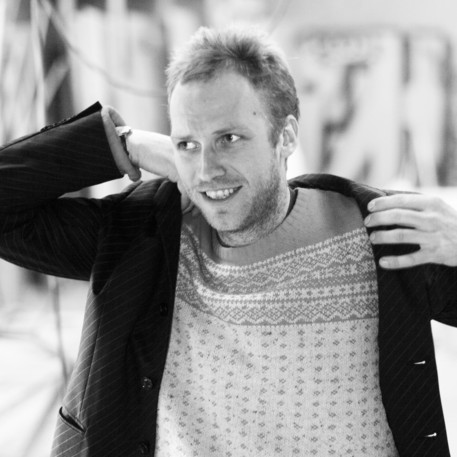Computer Games as Art Form
Arnt Jensen has been a key figure in the development and growth of video games as an art form. In 2008 he received the Danish Arts Foundation’s three-year work grant, and his two famous games, LIMBO and INSIDE, have received development funding from the Danish Film Institute. He is in a league where the reviewer from the Washington Post draws lines to Edvard Munch and Ingmar Bergman, but his colleagues also say that he is uncompromising, sure of himself, awkwardly shy, and obsessed with creating the very best. He himself says that all his life he has wanted to create something that people can be immersed in. Something he can be proud of.
Arnt Jensen makes games and has done so his entire life, ever since his computer interested father brought home the family’s first PC from Texas Instruments in the early 1980s. His second major interest was drawing, but he did not imagine he could combine the two talents and make a living from it, not until he started at Design School Kolding in 1994 and felt a whole new world opening up for him. It was the craziest thing. It was almost like having found your way home, he says.
Arnt Jensen explains that at the school he learned for the first time that it is okay to be stubborn, uncompromising and have a big ego. – I had gone to public school with 400 students, and almost everyone knew I was the one who could draw. I was sort of one of a kind. But then I arrived at Design School Kolding, and suddenly we were all one of a kind who had gathered from all over Denmark, he says.
After graduating in Kolding, he was hired by the Danish game company IO, but he did not really thrive there. Then he became a freelance artist and almost hated it and he constantly tried to invent something that he could call his own. One day, during a break, where he was sitting and drawing as usual, everything changed. He made the first drawing for what was to become the game LIMBO. He created a hazy, oppressive and threatening universe in black and white, and he has stuck to that universe. Every time he started to have doubts, he returned to that drawing and held on. Uncompromisingly.
It took him six months to reach the point where he drew the little boy you are in the game and who is looking for his sister in an eerie, monochrome world with dangers everywhere: Traps, giant spiders, knives and shingles. The country Limbo is a dystopian nightmarish world, the parallel world between Heaven and Hell, or Purgatory, according to the Catholic faith.
In an interview with Rasmus Karkov in the daily, Jyllands Posten, he says: All selections and deselections in the game have been made in order to make the experience more powerful; to let people immerse themselves, vanish in the game. That’s what I am looking for myself.
The game was released in 2010 and became the third most award-winning game that year. When Arnt’s next game, INSIDE, was released in 2016, it was received even more enthusiastically, and it has been nominated for countless awards at all the major festivals and conferences in the world. In its review on May 5, 2016 the Washington Post wrote:
“There is a term in Danish, ‘gennembrud’, that means ‘breakthrough’. In 1883, the critic, Georg Brandes, used the phrase ‘Det moderne gennembrud’, or the ‘Modern Breakthrough’, to describe the ways in which Scandinavian literary artists were rebelling against the conventions of their time and forging new paths for artists outside of the region. Since then, the idea has been applied to the paintings of Edvard Munch and the films of Ingmar Bergman. An “art of siege, of takeover” is how Arnold Weinstein describes such works in his book “Northern Arts.” Though they labor in another time and another medium, the developers at the Copenhagen-based video game studio Playdead deserve to have their work studied in such a light. They, too, are pushing the boundaries of their chosen art form by making creepy, visually expressive games that tap into the dark areas of the collective unconsciousness.”
Today Arnt Jensen is CEO of Playdead that has a staff of 25 and is located at Pilestræde in Copenhagen.




